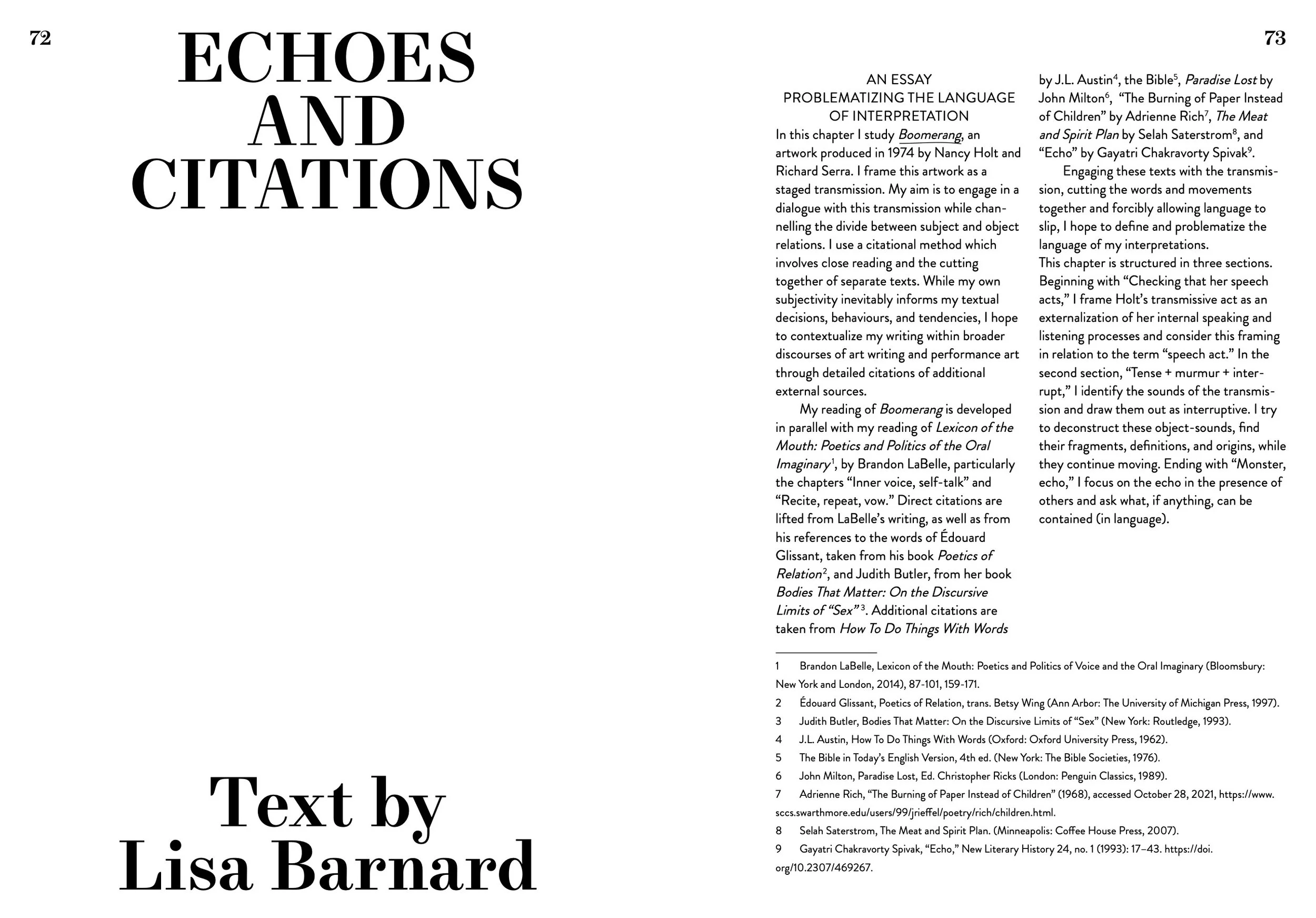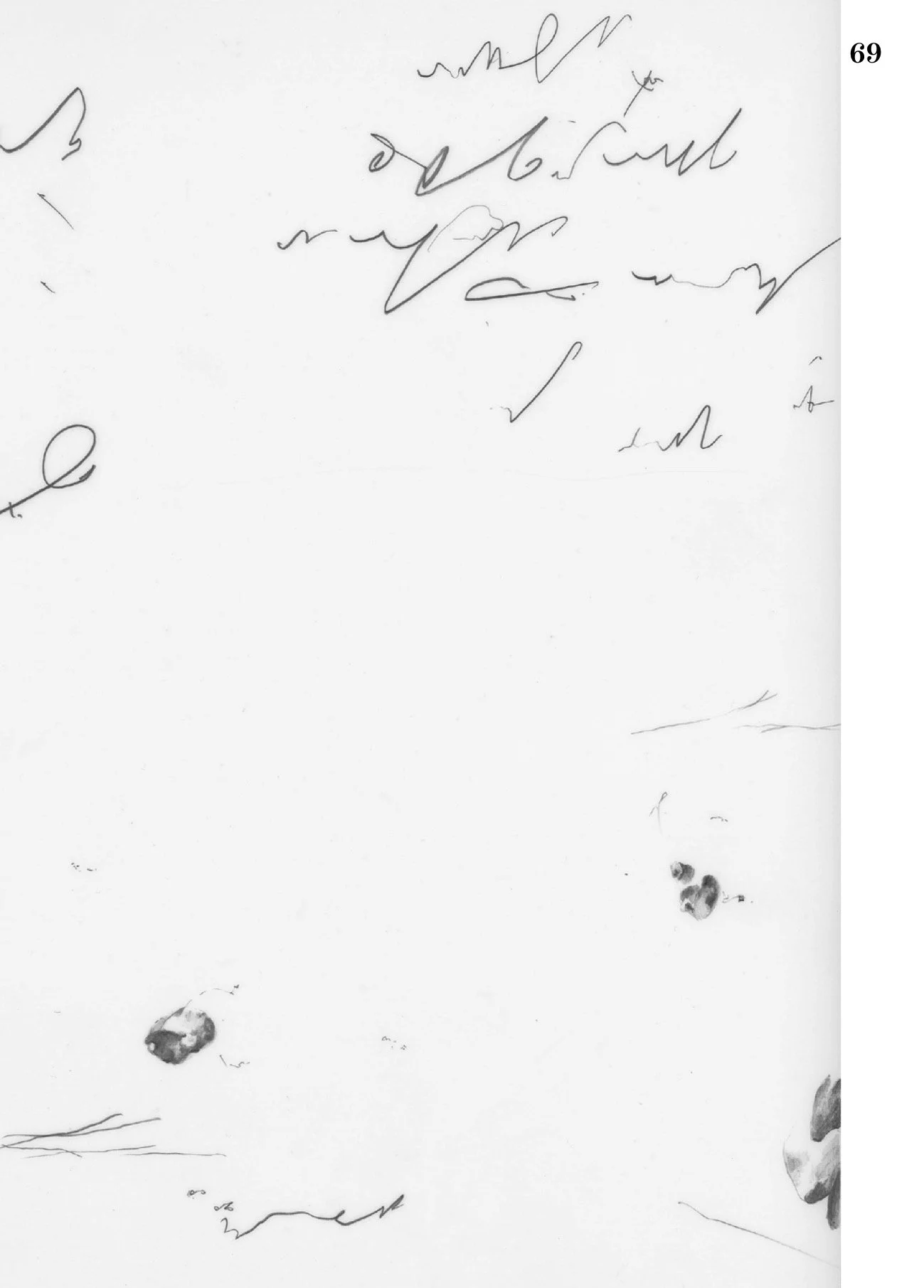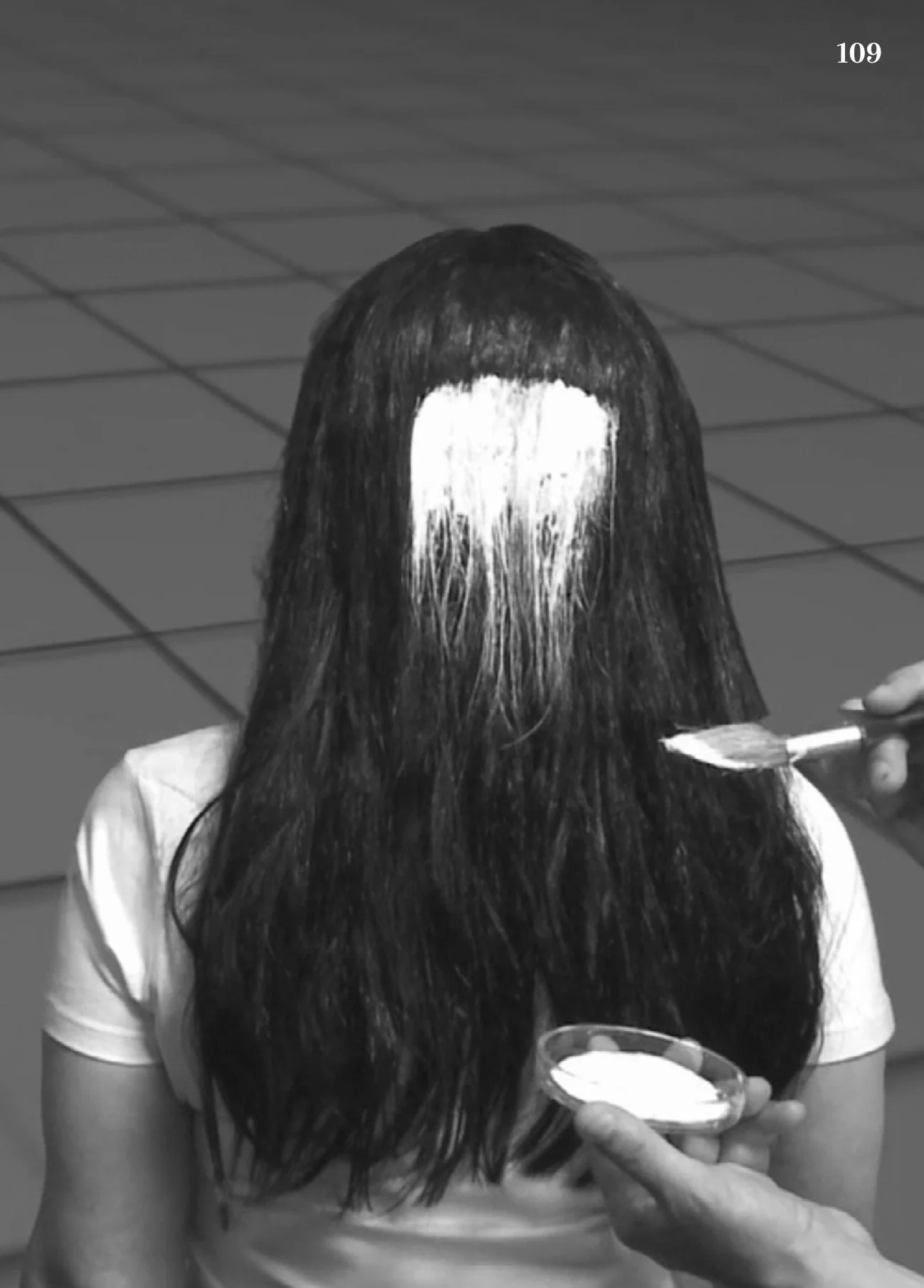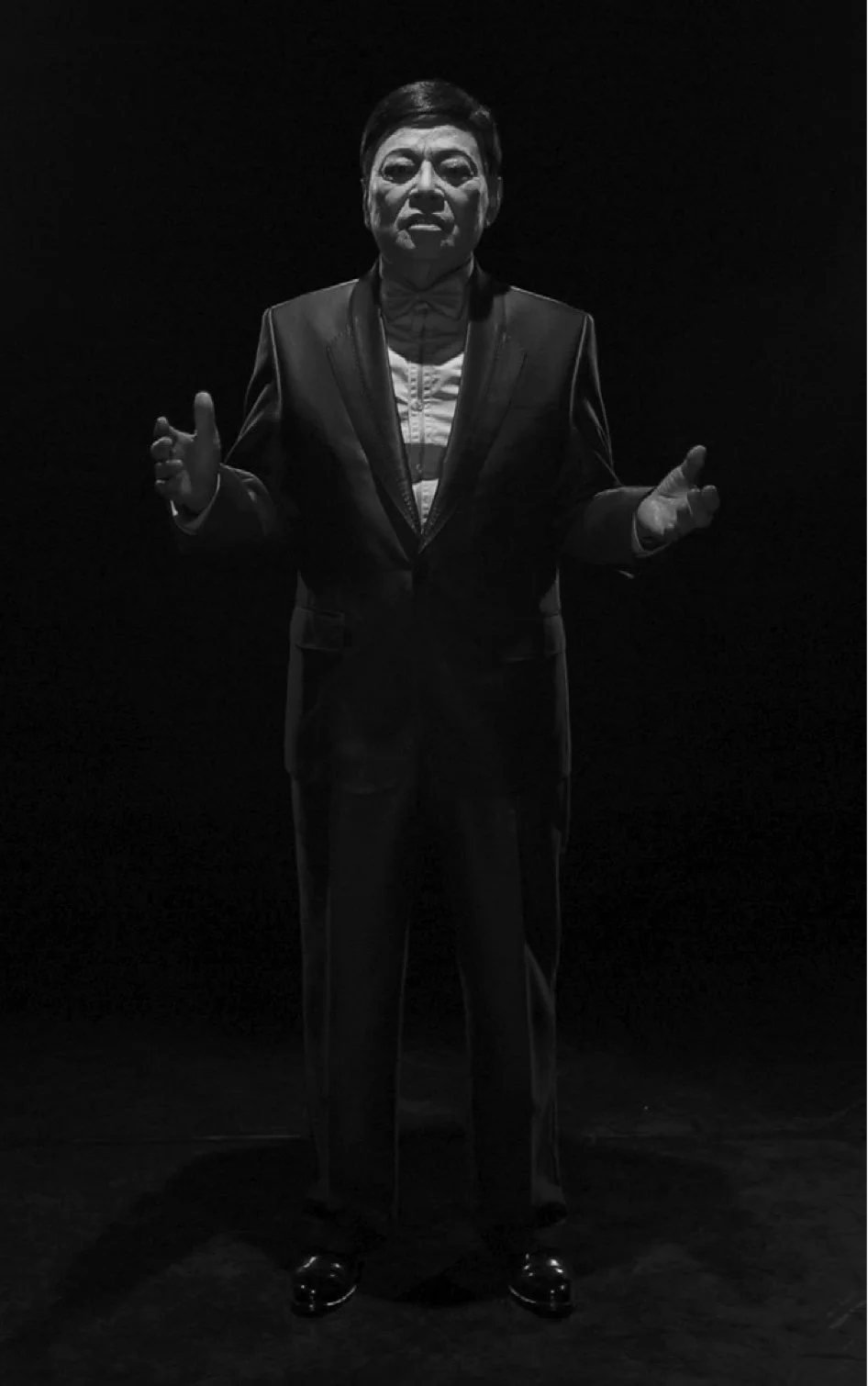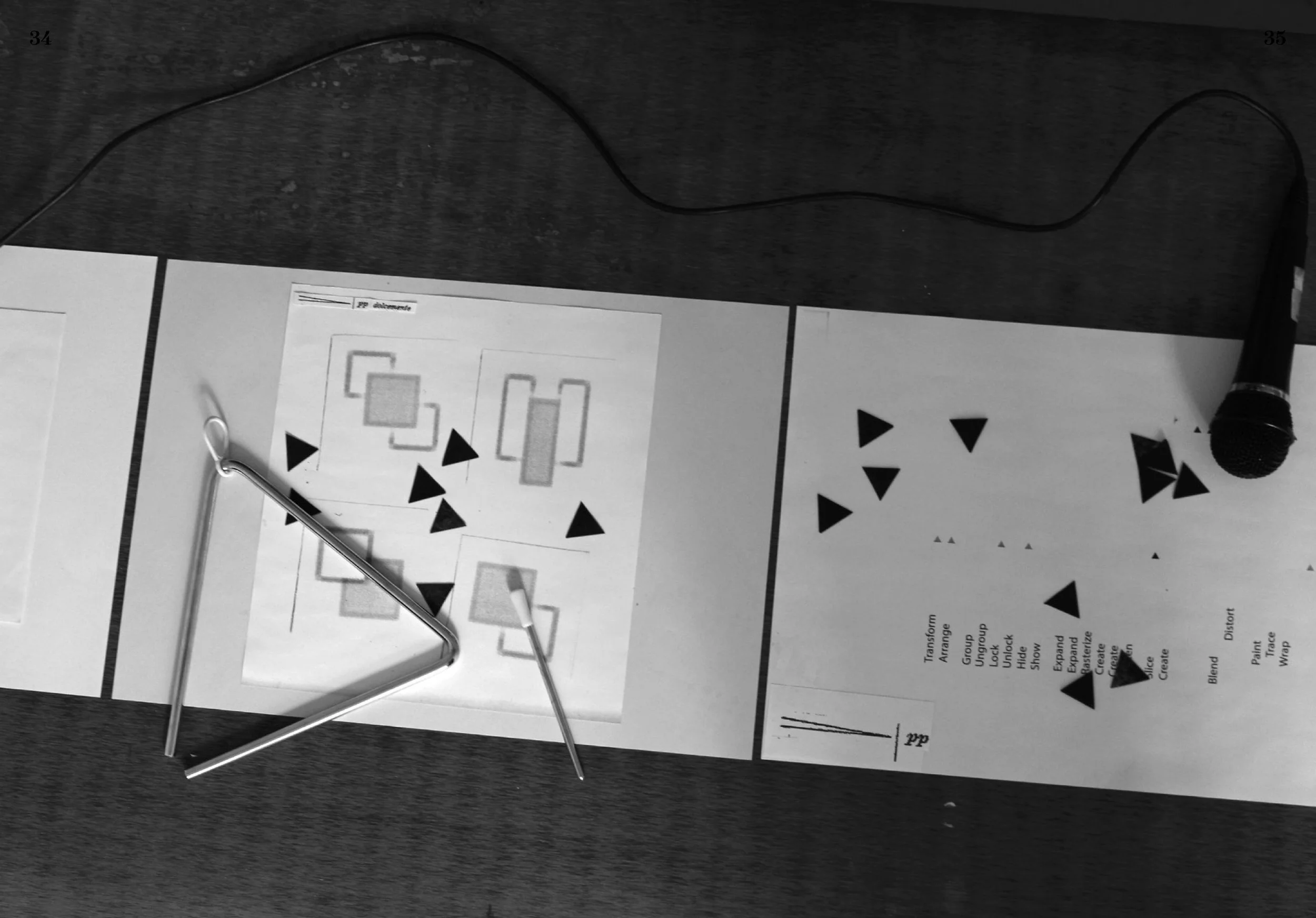
On Waiting... for their words to leave our mouth
Publication
On Waiting … for their words yo leave our mouth, Strauhof, Zurich, 2022
pp. 132
ISBN: 978-3-9525232-3-0
Design: Chiara Zarotti, Laura Lackner
Edited: Mirjam Bayerdörfer, Alun Rowlands
Supported by Stadt Zurich Kultur, Stanley Thomas Johnson Foundation, Migros Kulturprozent, temperatio Stiftung für Umwelt, Dr. Georg und Josi Guggenheim-Stiftung
Public Programme:
THE READING GROUP
Offene Lesegruppe / Open Reading Group (F+F/Reading)
Text und Diskussion auf Englisch
04 December 2021
LESEN OHNE AUGEN/ READING WITHOUT EYES
Performance und Lesungen aktivieren die Literaturliste der Ausstellung/ Activating the bibliography (F+F/Reading), Deutsch/ Englisch
04 December 2021
PERFORMANCE NACHMITTAG / AFTERNOON PERFORMANCE
performances von und mit Kira van Eijsden, Anne Käthi Wehrli und Angela Marzullo A.K.A Marita
11 December 2021
Lisa Barnard, Echoes and Citations, 2021
Szuper Gallery,
Liquid Trust, video, 33 mins, 2015
Banner Image: Izidora L. Lethe, Desire (32000 BP), 2018. Strauhof 2021.
Fotos: Zeljko Gataric
Forward / Vorwort
On Waiting … for their words to leave our mouth, began as a project with a deceptively simple proposition – to examine the relationship between art and literature. Emerging from shared research interests between F+F Schule für Kunst und Design, Zürich and Reading School of Art, Strauhof generously became the locus and host for interactions amongst artists, curators, and learners. The social dimensions of reading and writing shaped the initial reciprocal exchanges.
We initiated two online workshops, ‘Writing out loud’ and ‘Reading out loud’ convened in Reading and Zurich respectively, that problematized ideas of artists writing and literature. We began by considering the multi-dimensional sites for writing, waiting for the host to join and glitching through online reading groups. We looked at ‘how’ artists ‘write’ within their work and what we can learn from our reading. Each session mapped the movement of writing from the page to a site, to performance and installation, to digital platforms and networks. We distributed the possibilities inherent in the relationship between art and language. Here, the letter, the word, is seen and experienced. They are made corporal, translated into sounds, figures, images or patterns.
Sometimes this literature is scrambled or negated, as language is unbound from the spines of books as well as from its received forms and meanings. And, in some cases, from the obligations of communication altogether. We grappled with linear and non-linear narrative, textuality, the interplay between image and text, the line between poetry and performance, creative forms of documentation, and what constitutes a version versus an iteration. And the ethics of leaving a reader with imaginative work to do. Working with these bodies of text also created an opportunity to move more freely among disciplines.
To help us develop these ideas we hosted three online artists lectures. Annabel Frearson presented culturally significant texts, literature, anagrams and unspeakable sounds within a conceptual art writing practice that asks what if words are a finite resource that need to be recycled, shared and recombined to remain usable? Una Lee told us stories, inviting us to consider liveness and veracity across the networks that we assemble and act within. Jesper List Thomsen’s readings figured a social body. Thomsen shaped our understanding of spoken language as movements of air pushed by the lungs, provoking vibrations, which are tuned by cords, throat, nose and mouth. Our bodies are sites for accumulating language.
The pages of material included here, in this reader, are drawn from all participants of the project alongside contributions from the exhibiting artists. Contributors to this reader reflect the multitude of questions posed, answering in a range of subject positions, argument, and form. Attention to the performative, fictive and material dimensions of writing, as both personal and social inscription, becomes apparent. This estranged literature, often poetic, often opaque, is captured across the following pages. A closet drama, not intended for performance but written for the reader who stages the work through their reading. These uses of literacy and fiction embodies experience for learning and knowledge.
Call them poems, scripts, cognitive maps, metaphors, or narratives, the scripts within artists’ practices are how we describe the world to ourselves and share with others. We tell ourselves stories about ourselves (identity), write about the world (perceptions), raise our voices to others (connections), alongside the drama of our experiences (embodiment). At the same time, we are lured into learning about the world through someone else’s eyes or listening to someone else’s voice. Learning is an ongoing prompt of the fluctuating ecologies of what it means to know something. This is not deceptively simple and cannot be easily parsed or transcribed into a corpus of literature. Words are more than stagehands of the body, they can illuminate, absorb, and translate matter into something else. To document, as verb, derives from the Latin docere—to show, to point out, to teach. Documentation can exceed the indexical, the pedagogical and imaginative. A self-eroding writing, an embodied writing, that dissolves when seen or uttered, that amplifies different voices. To be concerned about art and literature is to be a learner participating in the poetics and politics of the present through emergent bodies of writing.
— Alun Rowlands
Workshops
On Waiting (for the host to join)
These talks form the first part of an international exchange project bringing together artists and students from around the F+F Schule für Kunst und Design and the University of Reading.
Jesper List Thomsen
Wednesday 10 March 2021
“Language when spoken is the movement of air pushed up by the lungs, provoking vibrations of the cords, which are tuned by throat, nose and mouth. We most often take for granted that things travel in a certain way, perform in a certain manner. We are perhaps even inclined to a particular kind of shyness or submission when it comes to the movement of ideas and events that seems to take their cue from powers beyond us; like a body, or an automated reasoning task, or a corporation. The body, the body, the tongue is an attempt at making an image where the direction of movement isn’t predetermined, where a beginning and an end are interchangeable.”
Jesper List Thomsen on his project for Reading International
Jesper List Thomsen (b.1978, Denmark) is an artist based between Turin and London whose practice begins in writing, traverses the body and ends in painting. He uses his body as a site for accumulating language, denoting a fractured meld where each attempt to speak both bolsters and casts doubt upon what was and what will be. Through text, painting, reading-groups, and performance — or language, image, discourse, and body — he activates the potential in a certain multiplicity, engaging the semantic tissue of our cultural and political present.
His forthcoming book FREEEee will be published by L’Esprit de L’Escalier in 2021. Recent exhibitions and performances have taken place at Fanta-MLN, Milan; Hot Wheels Athens, Athens; Parrhesiades, London; South London Gallery, London; Grüner Salon, Volksbühne, Berlin; Bureau des Réalités, Brussels; Reading International, Reading; Serpentine Gallery, London; Künstlerhaus Stuttgart, Stuttgart; ICA, London. Base Base, a book-length collection of his texts was published by Juan de la Cosa/ John of the Thing, Mexico City/ London in 2018.
Una Lee
Wednesday 3 March 2021
‘How do you make great art when the reality has jumped the shark?’ sang Tim Minchin, the Australian comedic minstrel about having a creative practice amongst the pandemic. What indeed is an artist to do in their work, when we have one and the only one topic that occupies all of us? What are we to understand about making live performances, when all we doa ll day long is to be bound to and by the same11"screen, even while executing different tasks and activities? Does this collectively transient period count towards our real life? Should we get a reboot of the time spent “staying at home” like in a video game? How do we know anything we read or see is real, even by taking the post-truth era into account? Does the tree still make a sound in the socially-distanced forest? Are we still alive if no one sees us exist other than online? Most importantly, how do we conquer the reality again? Una will present her work in sonic and performance arts engaging with invented histories and temporary personae. ‘Alternative Storytelling, Alternate Realities’. I invite you along to question and investigate the potential meaning of ‘real’ and ‘live’ in storytelling, and their particular implications in the specific lifestyle that we are currently consuming, caused by the pandemic and assisted by the brilliantly timed establishment of virtual social networks
Annabel Frearson
Wednesday 25 February 2021
Annabel Frearson’s work is largely text based and she produce what might be called conceptual art writing. She works with historically significant cultural objects, such as texts and films, to create new works that can be both poetic and political. For example, she is reconfiguring the entirety of Mary Shelley’s 1831 novel ‘Frankenstein’ into a new expanded contemporary novel and associated works, such as an album of pop songs (Bad Brain Call). She has also combined words from two key feminist texts to create a series of neologisms (Wollstonochlincraft) and she has paid online gig economy workers to liberate text through anagrams and unspeakable sounds (Sic).
Workshop Resources via Padlet: Prologue, Ecstatic Alphabets, Storytelling, Scripts & Voiceover, Writing Out Loud.
On waiting … for their words to leave our mouth, Strauhof Literaturhaus Museum, Zurich, 2022
Exhibition with work by:
Joke Amusan, Kira van Eijsden, Christine Ellison, Annabel Frearson, Mikhail Karikis, Hyewon Kwon,
Izidora L. Lethe, Angela Marzullo A.K.A Makita, Tine Melzer, Elodie Pong, Szuper Gallery, Anne Käthi Wehrli, Latefa Wiersch.
F+F Schule für Kunst und Design, Zürich: Mirjam Bayerdörfer, Irene Müller, Daniel Hauser. Reading Group: Julia Aschwanden, Soraya Gmür, Noah Joel Huber, Chiara Siciliano, Caroline Stadelmann, Kerstin Wittenberg
Reading School of Art, University of Reading: Susanne Clausen, Alun Rowlands. Reading Group: Lisa Barnard, Maria Garay Arriba, Malou Dobson, Lucy Harwood
Strauhof: Rémi Jaccard, Philip Sippel
ÖFFENTLICHE FÜHRUNG / PUBLIC TOUR mit kuratorin / with curator
Mirjam Bayerdörfer, 15 December 2021
ÖFFENTLICHE FÜHRUNG / PUBLIC TOUR, Esther Kempf führt durch die Ausstellung / leads a tour through the exhibition, 19 December 2021
AUSSTELLUNGSRUNDGANG UND DISKUSSION / EXHIBITION TOUR & DISCUSSION, Sprachphilosophin / Philosopher of Language Deborah Mühlebach, 06 January 2022
WIR BENUTZEN WÖRTER, DIE SCHON ANDERE LEUTE IM MUND HATTEN / WE USE WORDS THAT OTHER PEOPLE HAVE ALREADY HAD IN THEIR MOUTHS, Kurzvortrag und Workshop der Künstlerin Tine Melzer zu sprachlichen Verschiebungen/ lecture and workshop by the artist Tine Melzer on linguistic shifts, 08 January 2022
Christine Ellison, Let’s Interface the Music and Dance, 2021



